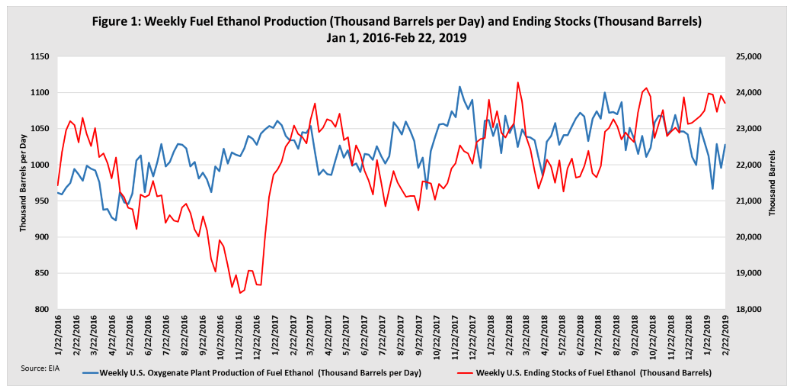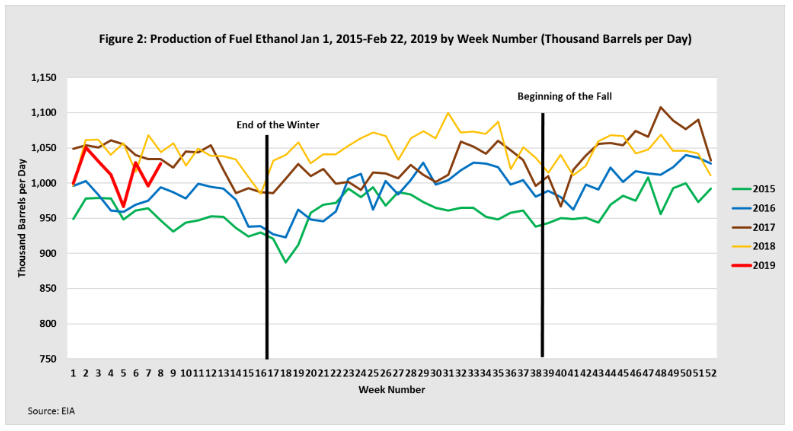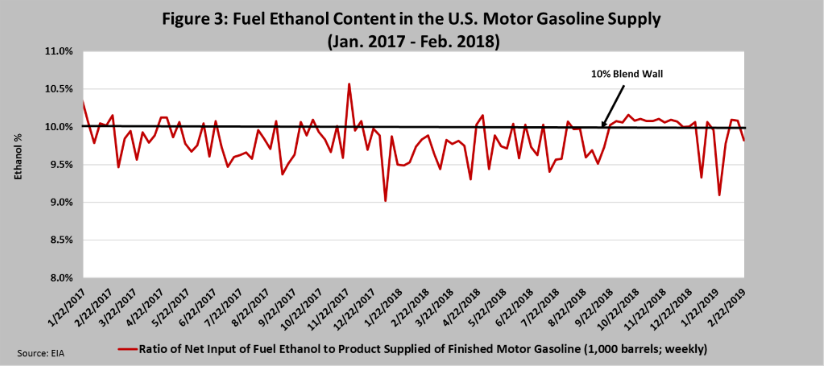posted on Sunday, March 3, 2019
U.S. ethanol production was at 1.028 million barrels per day for the week ending February 22, 2019 according to the most recent Weekly Ethanol Plant Production report from the Energy Information Administration (EIA). Figure 1 illustrates weekly production of fuel ethanol (thousand barrels per day on left Y-axis), and weekly ending stocks of fuel ethanol (thousand barrels on right Y-axis) from January 1, 2016 to February 22, 2019. Figure 2 depicts ethanol production by week number in the last four years, up to the week ending February 22, 2019. The average weekly production rate in 2019 leading up to the week ending February 22, 2019 has been 1.014 million barrels, a decrease of approximately three percent, compared to 1.043 million barrels during the same period in 2018.


The highest weekly production rate for the current year was recorded at 1.051 million barrels during the week ending January 11, 2019. Ethanol production in January and February of this year has been lower compared to the same period last two year, as seen in Figure 2.
The ending stocks of fuel ethanol were at 23.709 million barrels for the week ending February 22, 2019. As seen in Figure 1, the ending stocks have been increasing since the beginning of 2019.

Figure 3 shows the ethanol content as a percentage in the total gasoline supplied in the U.S. market. This percentage was calculated by using two data series published by EIA: Weekly U.S. Refiner and Blender Net Input of Fuel Ethanol (Thousand Barrels per Day) and Weekly U.S. Product Supplied of Finished Motor Gasoline (Thousand Barrels per Day). As seen in Figure 3, gasoline supplied to the U.S. market consisted of an average 9.82 percent ethanol for the week ending February 22, 2019. On an average weekly basis, 9.82 percent ethanol was included in the U.S. gasoline supply during 2018, compared to 9.86 percent during the same period in 2017. This shows a fractional loss of domestic ethanol demand in 2018 compared to 2017.